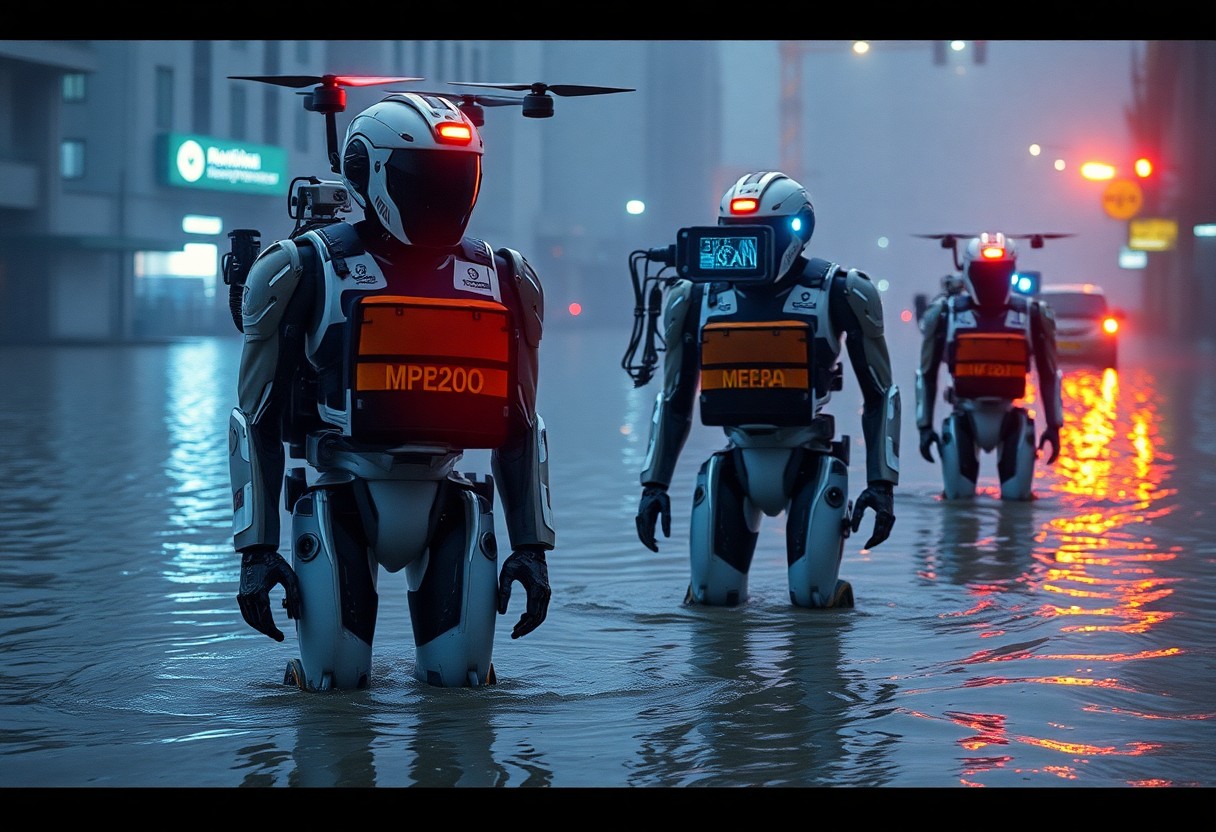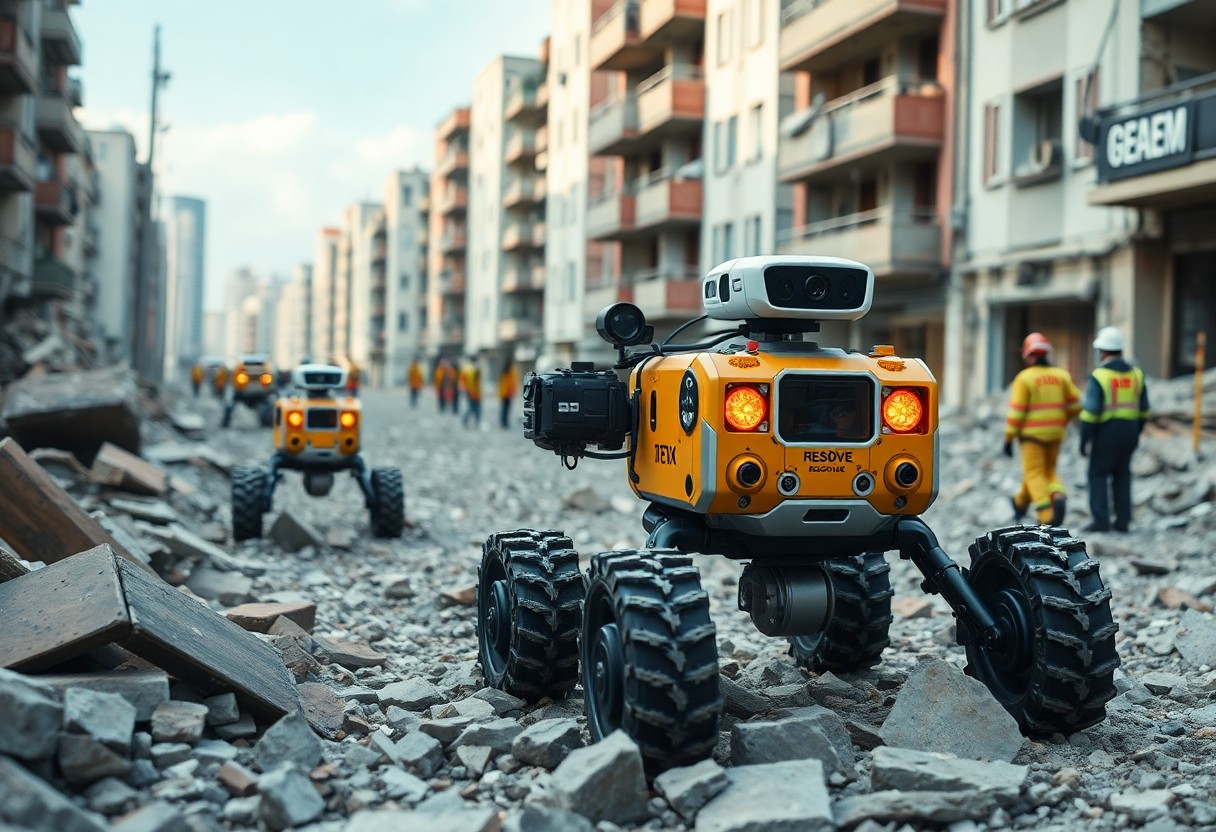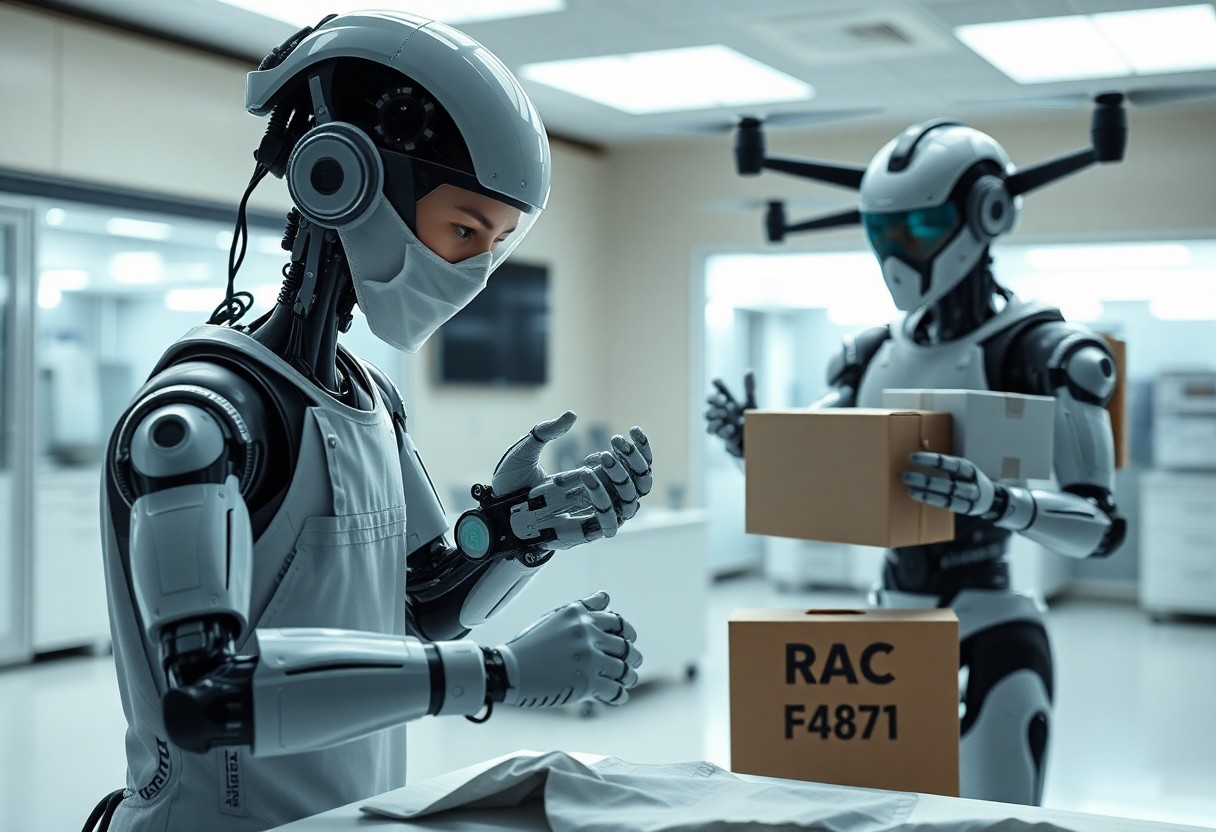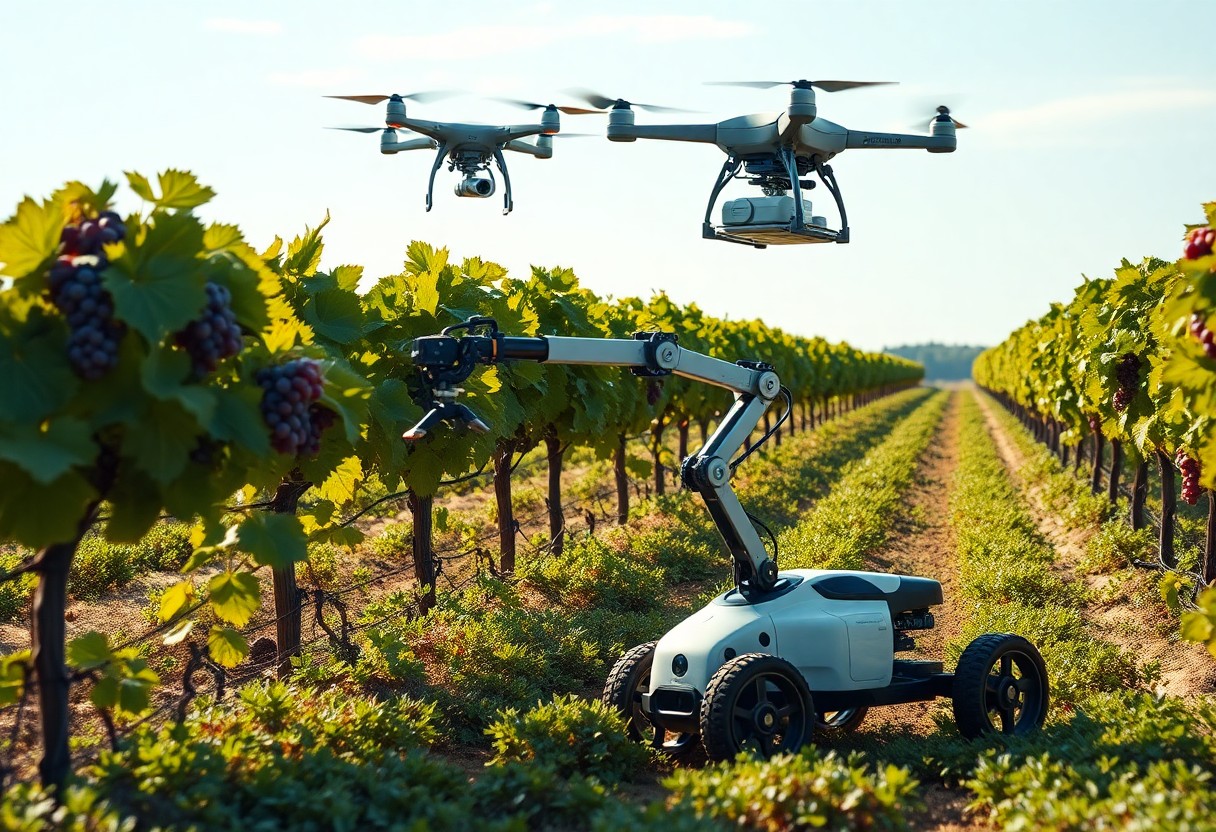Robots are transforming disaster response by enhancing efficiency and safety in perilous situations. You can explore how these advanced technologies assist emergency responders in locating survivors, assessing damage, and delivering vital supplies in environments that are too dangerous for humans. By utilizing robotic systems, your understanding of disaster management expands, showcasing the instrumental role these machines play in saving lives and minimizing hazards in catastrophic events.
Revolutionary Designs in Robotic Technologies
Advancements in robotic designs have led to innovative solutions tailored for disaster response scenarios. Sleek, modular systems now allow for easy transport and quick deployment in emergencies. These robots are engineered with lightweight materials and adaptive capabilities, enabling them to navigate complex environments with ease. Their versatility enhances rescue efforts, allowing teams to deploy specific units optimized for various challenges, from navigational obstacles to hazardous materials.
Groundbreaking Innovations in Mobility
State-of-the-art mobility features enable robots to traverse challenging terrains with unprecedented agility. Utilizing advanced algorithms and adaptive locomotion techniques, robots can navigate rubble, climb stairs, or even traverse water. This mobility innovation ensures robots can reach victims in hard-to-access areas, significantly speeding up rescue operations and improving outcomes for those in need.
Enhanced Sensory Capabilities for Search and Rescue
Advanced sensory technologies empower disaster response robots to detect life signs, hazardous materials, and environmental changes effectively. Incorporating thermal imaging, gas sensors, and acoustic monitoring allows robots to gather critical information quickly. These enhanced sensory capabilities facilitate precise decision-making during rescue missions, ensuring responders can effectively assess and address any emerging dangers.
Thermal imaging sensors can identify body heat, making it possible to locate survivors buried under rubble, while gas sensors detect toxic fumes or chemicals, ensuring the area is safe before human responders enter. Acoustic monitoring technology can pick up sounds like cries for help, further enhancing the chances of locating trapped individuals. These sophisticated tools improve situational awareness and increase the likelihood of successful rescues, demonstrating how robotic innovations play a vital role in modern disaster response efforts.
Life-Saving Applications During Disasters
Disaster response robots are designed to operate effectively in extreme environments, offering life-saving applications across various scenarios. Their capabilities range from search and rescue to surveillance, enabling emergency responders to save lives and mitigate damage more efficiently. By leveraging advanced technology, these robots provide critical assistance that simply cannot be achieved by human teams alone.
Flood Response: Navigating the Unreachable
In flood situations, traditional rescue methods often become impractical due to rapidly rising water levels and dangerous currents. Response robots equipped with amphibious capabilities can traverse flooded areas to deliver supplies or locate stranded individuals. Through real-time data transmission, these robots significantly enhance situational awareness, ensuring swift action and improved outcomes.
Earthquake Recovery: Precision in Chaos
After an earthquake, the chaotic environment presents unique challenges for rescue teams. Robots designed for this purpose can navigate debris fields, identify heat signatures, and assess structural integrity. Their ability to perform detailed reconnaissance allows teams to prioritize rescue efforts, making every second count in saving lives. Case studies show that deploying robots in critical areas has led to a notable increase in successful rescues.
The Role of AI in Emergency Response
AI significantly enhances the efficiency and effectiveness of disaster response efforts. By leveraging advanced algorithms, these systems assist in identifying critical needs, predicting outcomes, and optimizing resource allocation during emergencies. This technology empowers responders to make informed decisions quickly, ultimately improving survival rates and minimizing the impacts of disasters.
Decision-Making Algorithms That Save Lives
Decision-making algorithms analyze vast amounts of data in real-time to deliver actionable insights during crises. By weighing various factors such as location, resources, and affected populations, these algorithms guide responders in prioritizing their efforts effectively, ensuring that assistance reaches those who need it most at the right time.
Real-Time Data Processing for Effective Action
Real-time data processing allows emergency responders to adapt quickly to evolving situations. Utilizing data from drones, sensors, and social media, AI systems synthesize information to provide situational awareness and inform strategic decisions, ensuring that you can respond appropriately to the unique challenges presented in each disaster scenario.
During crises, real-time data processing integrates multiple information sources, including weather updates and geological data, to create a comprehensive picture of the disaster landscape. For instance, in the aftermath of an earthquake, AI systems can analyze seismic activity data to locate survivors, predict aftershocks, and manage evacuation routes efficiently. By offering immediate insights, these technologies empower your team to act swiftly and strategically, ultimately saving more lives while effectively coordinating the response effort.
Ethical and Operational Challenges in Implementation
Implementing disaster response robots presents several ethical and operational challenges that must be navigated thoughtfully. The integration of such technology raises concerns regarding decision-making authority, particularly in high-stakes scenarios where quick judgment is vital. Balancing automation and human oversight becomes vital to ensure that the robots complement, rather than replace, your critical human insights and instincts during crises.
Balancing Automation and Human Judgment
Automation in disaster response robots can enhance efficiency, yet it poses risks if human judgment is sidelined. You may rely on robots for data analysis and logistics, but human oversight remains indispensable in interpreting complex situations and making nuanced decisions. The most effective strategies will involve maintaining a collaborative dynamic, where robots augment your capabilities without overriding your judgment.
Addressing Public Concerns: Privacy and Accountability
Public apprehensions regarding disaster response robots often center around privacy and accountability. As you deploy these technologies, concerns arise about surveillance and data collection practices during emergencies. Establishing clear protocols and transparent communication can help mitigate fears, ensuring that the deployment of these robots respects individual rights while also enhancing safety measures.
Public concerns about privacy and accountability in the use of disaster response robots are significant. For instance, citizens may worry about being monitored without consent during emergencies. To address these issues, establishing guidelines governing data collection, usage, and storage is vital. Moreover, creating channels for public feedback allows you to directly engage with community concerns, fostering trust while emphasizing that accountability measures will be in place to review robot actions, thereby upholding ethical standards in disaster management.

Future Innovations: Shaping Tomorrow’s Response Teams
Emerging technologies are set to revolutionize the landscape of disaster response, making teams more agile and effective. Robotics combined with artificial intelligence offers the potential for enhanced situational awareness and decision-making capabilities. These innovations will not only improve response times but also contribute to more accurate assessments of disaster impacts, ultimately leading to better resource management. The integration of drones, ground robots, and real-time data analytics will forge a new standard in emergency operations, ensuring that every second counts when lives are at stake.
Collaborations Between Tech Companies and Humanitarian Organizations
Partnerships between tech companies and humanitarian organizations are becoming vital in developing cutting-edge disaster response solutions. Collaborative projects focus on sharing knowledge, resources, and expertise that can produce innovative tools tailored for real-world applications. For instance, companies like Google and Palantir have joined forces with NGOs to create data-driven platforms that enhance logistical operations, ensuring swift and effective responses in crisis situations. These collaborations bridge the gap between technological advancements and community needs.
The Next Generation of Autonomous Disaster Response
The next generation of autonomous disaster response robots is poised to transform how emergency situations are managed. With increased capabilities in navigation, reconnaissance, and interaction with human teams, these robots can autonomously survey disaster zones, identify survivors, and deliver imperative supplies with minimal human oversight.Companies like Boston Dynamics are advancing robotic dexterity, enabling machines to function in environments that are hazardous for humans, thus reducing risk and enhancing the efficiency of rescue operations.
Summing up
Ultimately, disaster response robots represent a transformative technology that enhances your ability to save lives during emergencies. By leveraging advanced sensors and artificial intelligence, these robots can access hazardous environments more effectively than humans. They assist in locating survivors, assessing damage, and delivering supplies, significantly improving response times. As you consider the importance of innovation in disaster management, it’s clear that integrating robotic solutions can lead to more efficient and effective outcomes, ultimately making your relief efforts more impactful in saving lives.







